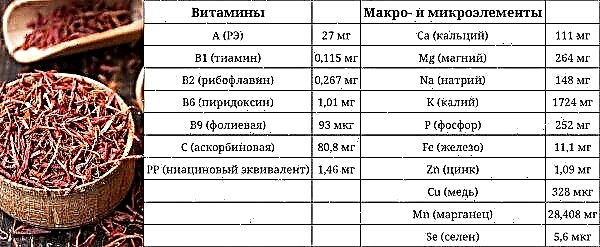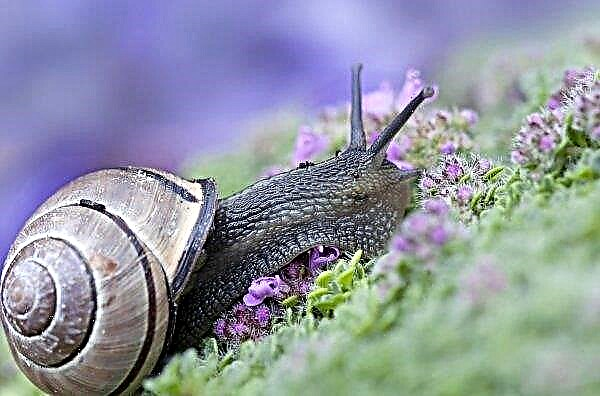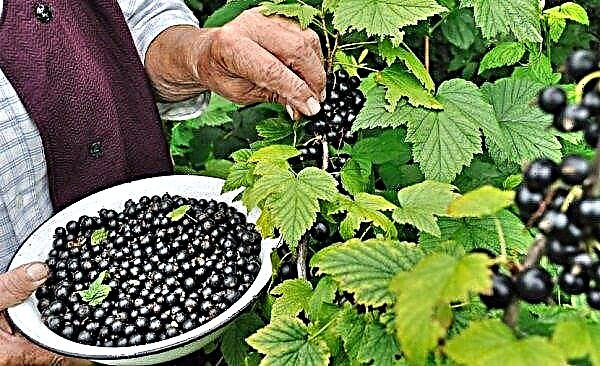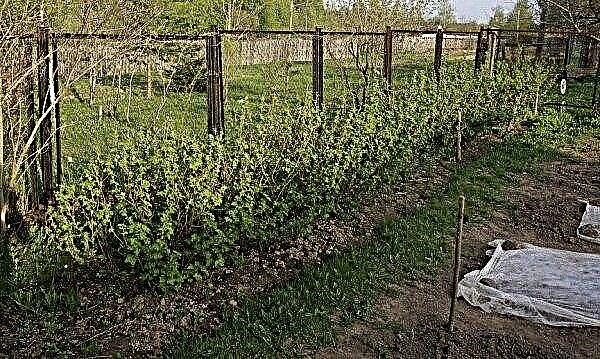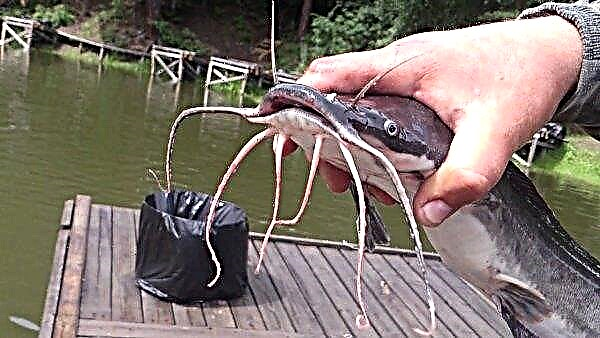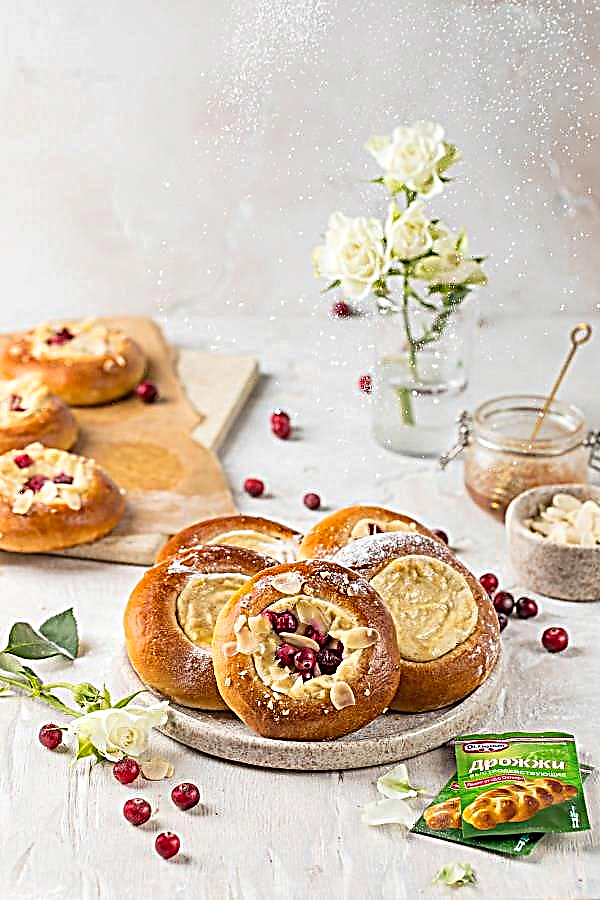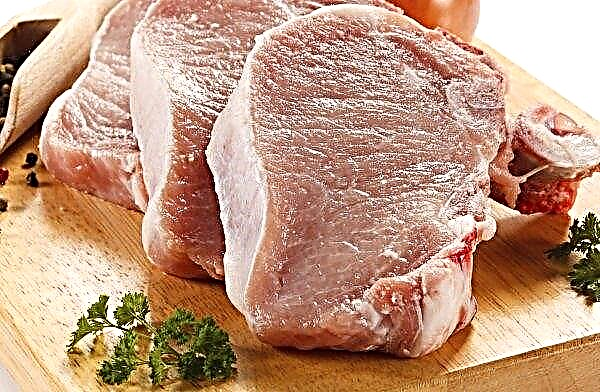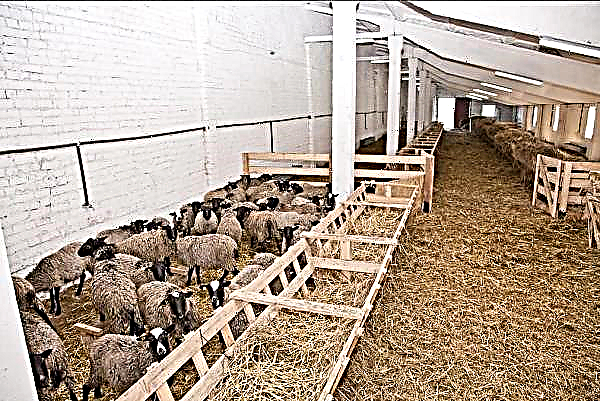Gladioli are beautiful flowers that can advantageously highlight any summer cottage on the general background. However, not all summer residents are aware of the possibility of their productive cultivation not only in open ground, but also in pots. Having planted flowers in a beautiful flower pot or simply clay containers of a standard form, you will get an excellent decorative element for steps, a balcony or even an indoor room. How to properly plant flowers in a planting container and what you should know about further care for them - read in this article.
Features of such a landing
The first thing to consider before a “potted” planting of gladioli - not all varietal varieties can be grown in this way. Given the ability of the culture to quickly grow root mass, many of its representatives can be grown only in an open area. For indoor floriculture, only those that usually do not grow above 60–80 cm (mostly varieties with small or medium-sized flowers) will be suitable options.
The following varieties of gladioli are considered the most suitable for container cultivation:
- White city. A flower from the primrose group, with a diameter of 3.5–7.5 cm. A blooming inflorescence in the form of an ear can consist of 23 small snow-white flowers.
- Columbine. Another primrose variety with small flowers. Reddish-white flowers favorably distinguish the variety from the rest, making the plant a highly decorative element for any flower bed.
- Tinkerbell. This variety is referred to as butterfly type varieties. Basically, the flower grows to 45–75 cm in height and looks great in a flowerpot. Inflorescences belong to the spike-like type and are formed by bright orange flowers, with a yellow pharynx. As in the previous case, this color makes them a great addition to any flower garden.
- Melody. The inflorescences of this variety have a pinkish tinge, with an accent in the form of a scarlet bright spot in the center. Adult plants can have 80 cm in height, so they can be planted only in large-sized pots.
- Georgette. The red-yellow representatives of the variety will look great in any flower arrangement, in particular when decorating the territory with potted flower crops.
- Moscow White Stone. Unusual gladioli up to 60 cm high. In one spike-shaped inflorescence, there are up to 40 flowers with corrugated petals.
Did you know? Gladioli were known to people even 300 years BC. e., however, in those days no one purposefully cultivated them, on the contrary, plants were considered weeds, and the ancient Greeks tried by all means to get rid of them.
Disembarkation Instructions
Placement of gladioli in potted containers begins with the selection of the best option for such containers, preparation of the substrate and plant material for further cultivation. To achieve the most positive result from all the work performed, it is worth paying attention to each of the listed stages.
Video: Planting gladioli in pots
What you need for landing
In addition to the pot and soil, before performing planting measures, it is worth considering other requirements of these colors. For example, the place of their growth should be well lit by sunlight, which means that when growing indoors, you need to prepare such a place in advance: on the windowsill or balcony, if there is a suitable temperature.
Did you know? In the Middle Ages, gladiolus was considered one of the indispensable plants in folk medicine and was specially grown to prepare a medicine for toothache and improve lactation in women after the birth of a child.
The flowering can be prolonged by lowering the temperature values to + 13 ° C, so immediately make sure that you can regularly ventilate the space at the location of the plant. In the southern part of the house and without air conditioning, gladioli can not tolerate high summer temperatures and die quickly. 
Of the tools and materials for planting, you may need a shovel, a mini-rake for sweeping the soil, expanded clay or broken brick to organize the drainage layer, and, of course, the planting material itself (mainly in the form of bulbs). As for the specific landing time, it is better if it is mid-spring.
Preparation of soil and pot
When choosing a landing tank, it is necessary to take into account its main characteristics of the product: manufacturing material and dimensions. For most “potted” varieties of gladiolus, the appropriate parameters for such a container are a diameter of 20-30 cm and a depth of about 30-45 cm. It does not matter what you choose, clay pots or long plastic containers, the main thing is that they all have drainage holes for removal of excess moisture from the rhizome of flowers.
As for the substrate, a light and structured soil, quite nutritious and moisture-intensive, would be an ideal option for flowers. You can buy this substrate in finished form, but in order to save a little, it is worth mixing chernozem soil with chalk or chopped eggshell (enough 50 g per 2-3 kg of soil), a mixture of phosphorus and potassium (about 10 g per 2 kg of soil). Loam before filling in containers can be mixed with sand and peat.
Important! If you take the land from a garden or kitchen garden for flower culture, after mixing with the rest of the components, it should be calcined in the oven, which will get rid of all pathogenic microbes and pest larvae. Calcination of the earth is carried out for 30 minutes at temperature values in the oven + 70 ... + 90 ° C.
Flower preparation
Preparation of material for planting begins with its selection. Successful flower cultivation is possible only when using whole and absolutely healthy bulbs of the selected variety (miniature or small-flowered). For disinfecting the material, a half-hour etching in a solution of potassium permanganate (0.1%) or a 12-hour soaking in a previously diluted preparation “Citovit” is suitable.

In the latter case, it is worthwhile to carry out such preparation no later than 2-3 weeks before the direct planting of the bulbs, after which they remain in dry boxes for the rest of the time. If individual specimens have not germinated before the day of disembarkation, it is better to discard them and never to plant them.
Planting a plant
Planting flower bulbs can be called a completely normal process, because all that is required from the grower is simply to deepen the planting material (small shoot up) into the loosened substrate by 10-12 cm, leaving at least 5-6 cm of free space between the “neighbors”.
The first aboveground shoots usually germinate after 14–21 days, and then the pots are moved to a place that is calm and well lit by the sun (moisture should not be allowed to affect the aboveground part of the plant).
Proper plant care
Soon after planting, a long process of flower care begins. As with growing any other flower crops at home, it is important to consider several key aspects: watering and fertilizing plants, loosening and mulching the soil, garter and pruning of gladioli. All of them have their own characteristics, which are worth knowing before planting plants.
Watering and feeding
Land in a closed container dries out relatively faster than in an open area, therefore, planting gladioli in containers, in the future, you will have to take care of plentiful and regular watering, but without stagnation of moisture at the rhizome. On average, the frequency of watering flowers is 3 times a week, with an increase in the summer season at high temperatures (especially if containers with flowers are placed on the street under a canopy).

When watering, try not to get water on the inflorescences and leaves of the plant, otherwise they will begin to decay and the entire gladiolus will soon die. If possible, it is worthwhile to use only settled liquid at room temperature for irrigation, avoiding the use of chlorinated tap water.
Fertilize gladioli by the root and foliar method, applying mineral compositions 4 times at the beginning of flower development: when a third real leaf is formed on the sprout (nitrogen-containing compounds and potassium will be appropriate), when the sixth leaf is formed (it is worth adding a small amount of boric acid to nitrogen and potassium), and then carry out another fertilizing with potassium during the formation of buds and during the appearance of the first flowers.

In the latter case, for feeding, it is worth using only special mineral compounds for flowering crops. Organic nutrients are used as needed if gladioli are stunted. Eliminate this problem will help special preparations "Zircon" and "Epin."
Loosening and mulching
For the productive growth and development of flowering plants, they need a loose and nutritious substrate, with high rates of air and moisture permeability. For this reason, the topsoil should be loosened periodically, removing the hard crust that forms soon after the next watering.
Important! When loosening, try not to deepen the tool too much, fluffing up only a few upper centimeters of the substrate. To perform the procedure, it is best to use a wooden or plastic stick pointed at the end.
To prevent strong evaporation of moisture, the soil surface must be mulched with peat or organic humus, which will also become a good fertilizer for further irrigation.
Garter
Despite the fact that the "potted" gladiolus does not grow very high, some varieties still need a garter. If you notice that under the weight of the inflorescences, the stems begin to bend, it is better not to wait for a break and immediately tie them to a support driven in or by another structure located next to the pots. Often the reason for the curvature of the flowers is the lack of lighting, so try not only to tie up the gladioli, but also to place them in a more suitable place for growth.
When performing a garter, use only soft ropes that will not cut into the surface of the stem. The slightest violation of the integrity of the surface layer can cause infection in the tissue of the flower and the further development of diseases.
Pruning
Pruning gladioli grown in pots is to remove excess parts of the plant after its next flowering. However, through the leaves and stems, the bulb is fed, so you should not remove the green leaf plates, wait until they wither and begin to dry for natural reasons. Until this point, continue normal care by regularly watering and fertilizing the soil under the flowers.
After drying of the aerial green part, it is cut off, leaving only 6–9 cm of the stem on the surface of the pot. In this form, the gladiolus remains to hibernate, and already in the spring new shoots appear, growing with the same strength.
Breeding
Having an adult gladiolus plant at home, you can get a few more new copies without buying them in specialized stores. Propagate the plant at home (it doesn’t matter in an apartment or in a country house) in several ways: seed, tuberous or tuberous.
Seeds
Seeds described by plants are commonly used for breeding new varieties. At home, this method is likely to lead to the loss of new samples. If you still want to try to grow a flower precisely by seed propagation, then planting material should be sown in February, having prepared a suitable substrate in advance. It is desirable to collect seeds from monophonic varieties growing nearby. As a result, this will make it possible to obtain new flowers as similar as possible in shade.
It is desirable to collect seeds from monophonic varieties growing nearby. As a result, this will make it possible to obtain new flowers as similar as possible in shade.
To increase the chances of seed germination, they should be treated with Sodium Humate before sowing, soaked in diluted liquid for 2-3 hours. Strongly deepen the seeds in the soil is not worth it, just lightly push them in, sprinkle with soil and water well. Until the seeds germinate, it is advisable to cover the crops with glass or film, thereby creating greenhouse conditions.
 As soon as the temperature in the street rises, and the young seedlings get a little stronger, you can take them to the balcony, protecting them from drafts in advance.
As soon as the temperature in the street rises, and the young seedlings get a little stronger, you can take them to the balcony, protecting them from drafts in advance.
Corms
This option for propagating the selected variety of flowers is the most common method for home cultivation. During spring planting in closed containers, corms are divided into a couple of parts, each of which will later become the main material for further planting.
 The division must be done with a sharp knife, making sure in advance that at least one sleeping kidney and roots below will remain on each part.
The division must be done with a sharp knife, making sure in advance that at least one sleeping kidney and roots below will remain on each part.
Without these elements, the resulting piece is unlikely to take root in a new place and grow. The places of cuts must be treated with a solution of potassium permanganate and sprinkled with chopped charcoal, after which place the dividers in the soil with the bottom up.
Tuber buds
The tuber buds are formed on the surface of the gladioli bulbs, with one specimen counting from 15 to 100 tuber buds that form in just one season. In fact, each of them is a shortened stem with one lamellar outgrowth. The size and germination of different parts will also be different.

To obtain new gladiolus plants, it is better to take children with a diameter of 0.5–1 cm, therefore, if necessary, they can be additionally grown in containers with a removable bottom and a nutrient substrate. After they reach their optimum size, the tuber buds are moved into prepared grooves in the soil to a depth of about 5 cm.
Sprinkle the plantations with a substrate, water them well and cover the boxes with film. In general, tuber buds should spend at least a month under cover, but during this time they should be regularly ventilated and, if necessary, moisten the substrate with distilled water from the spray gun.
Video: Breeding gladioli by tuber buds
Wintering
At the end of flowering of gladioli in the current season, plants are pruned, dug from the ground and sent to a cool and dark place.
Important! Keep your gladioli dry throughout the cold season. Moisture can cause rotting and spoilage of planting material.
To perform all these steps correctly, follow these guidelines:
- It is better to remove tubers from the ground in early October, examining each of them well for signs of disease, pests or damage.
- Suspicious specimens should be treated with any complex fungicidal drug.
- Clean and disinfected bulbs must be dried and then refrigerated for further winter storage.
 The optimal capacity for placing such corms will be cardboard boxes, in which they are placed in the basement or refrigerator until spring.
The optimal capacity for placing such corms will be cardboard boxes, in which they are placed in the basement or refrigerator until spring.Better grown at home or outdoors
There is no definite answer to this question, since gladioli are equally well suited for landscaping gardens, as well as for decorating balconies or loggias in city apartments. All you need to do is to plant them in a flowerpot or beautiful and spacious pots.
Of course, when cultivating gladioli at home, the gardener has more responsibilities (for example, regular watering), but at the same time, in open soil, the likelihood of plant damage by pathogens will be much higher.
Gladioli can well be called a universal flower culture, which is great for growing both in open areas and in flower pots.In both cases, the planting and care process cannot be called very complicated, therefore, given some recommendations from experienced gardeners, it will soon be possible to get an excellent decorative addition to the garden or home.

